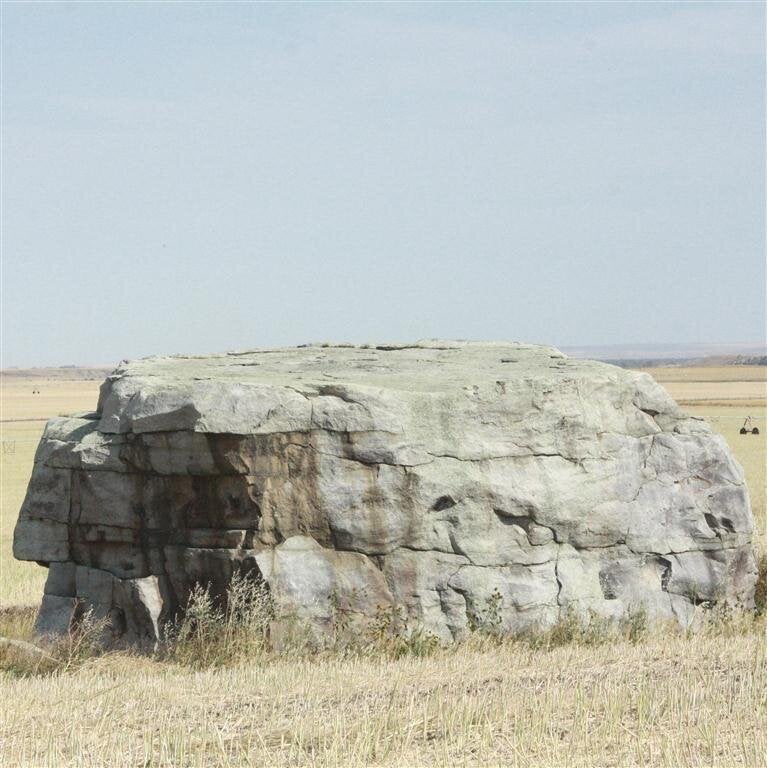
Irreplaceable and ancient Aboriginal etchings destroyed in southern Alberta, met their end recently by acid and power drill, reports state.
In an article published by the Pincher Creek Voice, the man who discovered that the ancient Aboriginal pictograms and petroglyphs on a southern Alberta erratic rock face had been destroyed through acid burns, power-washing and drilling, equated the destruction of the ancient Alberta writings to some of the worst cases of cultural crimes in recent history.
“When we hear of the tragic destruction of Buddhist artifacts in Afghanistan and the criminal activity of historic sites in Timbuktu, it is hard to imagine something like that happening in Canada, but it has,” said Stan Knowlton, an authority in First Nations history and language, and the Head of Interpretive Services at Head Smashed-In Buffalo Jump.
Knowlton had started mapping and recording the sketchings and had returned to where he originally found the markings – a rock east of Pincher Creek commonly referred to as the Glenwood Erratic – to continue his work, when he came face to face with the destruction, he said in his article.
What he found was an archeological site that had fallen victim to a deliberate process of destruction, employing acid, a power washer and even a power drill, Pincher Creek Voice staff Chris Davis and Toni Lucas reported following the discovery.
“Once there, up top, it became quite evident one was looking at a crime scene,” states the Pincher Creek Voice report.
“The effects of the pressure washing on the lichen show a determined effort to remove the surface of the rock. Most visually shocking are the two locations where a drill was used to make multiple holes to completely destroy whatever had been there before.”
Historians were shocked to hear that level of cultural destruction was possible in Alberta, the National Post reports.
“The site is part of the earliest heritage of Canada,” Michael Dawe, Curator of History at Red Deer Museum, told the National Post.
“It looks like an ancient ceremonial/religious site at Glenwood, Alta., was deliberately destroyed. If true, this is a shocking and appalling incident.”
Knowlton's work on the erratic etchings were part of a larger body of work, which he has amassed in an attempt to prove his theory that the Blackfoot people may have had a written language before the Europeans' arrival.
He told the Pincher Creek voice that carbon dating could’ve furthered his work but that may now be impossible.
“It's hard to date the writings. It would have been possible to carbon date the oils in the red ochre,” he told the Pincher Creek voice.
“And in the red ochre there was syllabic characters, syllabic writing engraved or inscribed in here."
The damage done and the history lost through this act must meet with equal punishment, Dawe told the National Post.
“Any attempt to deliberately ‘erase’ an irreplaceable part of Canada’s ancient cultural and/or religious heritage is outrageous and inexcusable,” he told the National Post.
“If this has happened in Canada, it should be denounced and those responsible should be prosecuted to the fullest extent of the law.”
